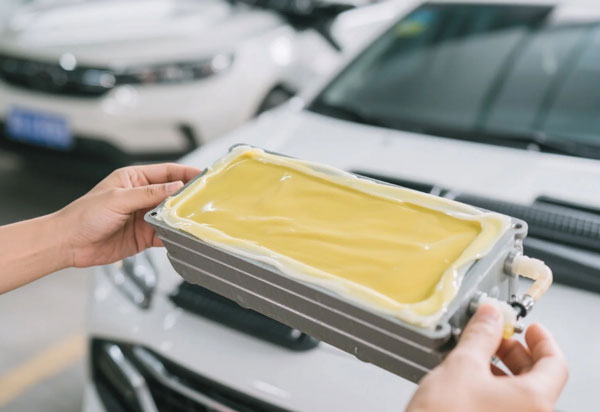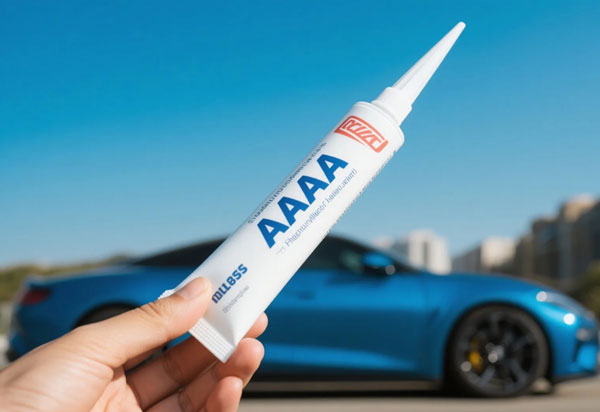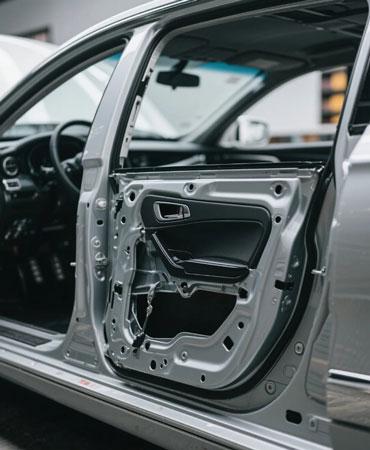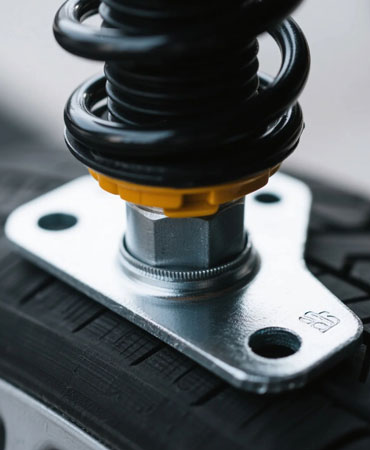 Home / News / Industry News / Automotive body adhesives improve vehicle NVH performance
Home / News / Industry News / Automotive body adhesives improve vehicle NVH performance 2025-10-22
With the continuous development of the automotive industry, consumers' demands for vehicle comfort are increasing, and NVH performance has become a key indicator of vehicle quality. NVH performance is directly related to a vehicle's driving comfort, handling experience, and brand image. To improve vehicle NVH performance, automakers are continuously innovating in body design, suspension tuning, and the use of sound insulation materials. In recent years, automotive body adhesives, as core materials for connecting body components, have garnered increasing attention for their role in improving vehicle NVH performance.
NVH performance primarily encompasses three aspects:
Noise: Sound from the engine, road, wind, and interior vibration.
Vibration: Mechanical vibration generated by the vehicle during driving, including engine vibration, suspension vibration, and vibration transmitted from the road.
Harshness: The vibration and discomfort felt by occupants when the vehicle encounters uneven road surfaces.
Traditional methods for improving NVH performance rely primarily on optimizing vehicle structure and applying sound-absorbing materials. However, with the trend toward lightweighting, metal thickness is reduced, weld points are reduced, and vehicle body rigidity is reduced, making NVH (Non-Volatile, Harshness, or NVH) issues more prominent. Against this backdrop, the use of vehicle body adhesives is considered a crucial means of improving overall vehicle NVH performance.

Automotive body adhesives are primarily used to connect structural components. They not only replace some welding processes but also provide sufficient structural strength in lightweight designs. Based on performance and application, they are categorized into the following categories:
Structural Adhesives: Primarily used for bonding load-bearing structural components such as front and rear longitudinal beams, roofs, and side panels. They offer high strength, high toughness, and high-temperature and corrosion resistance.
Sealing Adhesives: Used to seal gaps in vehicle bodies to prevent water, dust, and air infiltration. They are commonly used around doors, roofs, and windows.
Acoustic Adhesives: Specifically designed for NVH performance, they use highly viscoelastic materials to absorb vibration and noise, reducing noise transmission within the vehicle. These adhesives are typically made from materials such as polyurethane (PU), epoxy resin (EP), and acrylic, and are modified to meet the stringent requirements of automotive operating environments.
The key to improving NVH performance in automotive body adhesives lies in their viscoelastic properties. Compared to traditional welding, adhesive joining offers the following advantages:
Vibration Absorption and Damping: After curing, body adhesives possess a certain degree of elasticity and viscosity, which can convert vibration energy generated locally within the body into heat, thereby reducing the amplitude of vibration transmitted to the entire vehicle. This is very effective in reducing engine and road vibrations transmitted into the vehicle interior.
Sound Wave Isolation and Dissipation: The adhesive joint's contact surface provides a good seal, preventing airborne sound transmission and reducing the transmission of wind and structure-borne noise into the vehicle cabin. In particular, sound-damping adhesives can significantly reduce aerodynamic noise in areas such as doors, trunk lids, and roofs.
Optimized Stress Distribution: Traditional spot welding connections are prone to forming stress concentration areas, which can lead to localized vibration enhancement. Adhesives evenly distribute stress across the bonded surfaces, making the vehicle body more stable under vibration and reducing jolting.
Reducing resonance and noise amplification: The damping effect of adhesives adjusts the vibration frequencies between different vehicle body panels, preventing resonance and effectively reducing the amplification of structure-borne noise.
Door and Window Sealing and Soundproofing: Structural adhesives and soundproofing adhesives are used to bond the door linings to the vehicle body, eliminating metal vibration noise, improving sealing, and reducing wind and rain noise.
Structural Reinforcement of the Roof and Front and Rear Rails: High-strength structural adhesives are used to bond the roof and rails, increasing overall vehicle rigidity while effectively absorbing vibrations from the engine and road, improving ride comfort.
Vibration Reduction Design for the Trunk Lid and Tailgate: Soundproofing adhesive is added to the interior of the trunk lid, combined with structural adhesive to secure it. This not only reduces rear-end vibration noise but also enhances the door closing feel and overall NVH performance. Applications in New Energy Vehicles: Due to the lack of engine noise in electric vehicles, interior noise is more likely to be amplified. Body adhesives are particularly important for optimizing NVH in electric vehicles by improving damping performance and reducing the transmission of motor and road noise into the vehicle cabin.
To fully leverage the role of adhesives in NVH optimization, the following technical requirements must be met:
High bond strength: Ensures that structural components do not separate under high loads, collisions, and other conditions, maintaining overall vehicle body rigidity.
Excellent damping performance: The adhesive must absorb vibration energy at various frequencies, effectively reducing vibration transmission.
High and low temperature resistance and environmental aging resistance: Body adhesives must withstand temperature fluctuations from -40°C to +120°C, while also being resistant to water, UV rays, and chemical corrosion to ensure long-term, stable NVH performance.
Excellent workability: Uniform adhesive application and a moderate curing time ensure assembly efficiency on the production line while preventing voids or bubbles that could affect NVH performance. Lightweighting and environmental friendliness: Adhesives should meet the requirements of lightweight automotive design, comply with environmental regulations, and reduce volatile organic compound (VOC) emissions.
In summary, automotive body adhesives play an increasingly important role in improving vehicle NVH performance. Through their viscoelastic properties, adhesives not only absorb vibration and reduce noise, but also optimize stress distribution and reduce resonance. With the development of lightweight vehicles and new energy vehicles, high-performance body adhesives will become a key component of vehicle comfort and safety.
For automakers, selecting high-quality body adhesives not only improves vehicle NVH performance but also optimizes production processes and vehicle quality, making them a crucial component in enhancing brand competitiveness. In the future, with continuous technological advancements, the application prospects of adhesives in NVH optimization, lightweight design, and environmental protection will be even broader.
If you are looking for a reliable automotive adhesive supplier, we offer high-performance, multifunctional, and environmentally friendly adhesive products to help optimize vehicle NVH and improve structural performance, injecting new impetus into your automotive manufacturing. Whether it's a traditional fuel-powered vehicle or a new energy electric vehicle, we can provide customized solutions for your automotive manufacturing, helping to improve vehicle quality and market competitiveness.



